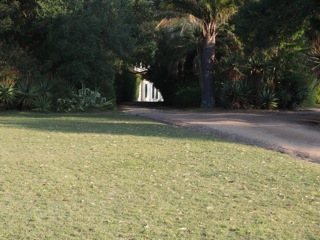Do you wonder what surprise awaits, as you wander up the drive….beyond the Jubaeachilensis, the Aloes, Agaves & trailing Pelargoniums? A tantalising glimpse here, beckons to discover what lies beyond …. and you have the rare opportunity to visit the House and Garden at Camden Park this coming weekend, on 20 & 21 September, when both will be be open to the public.

Camden Park (established by John & Elizabeth Macarthur in 1805, with the John Verge designed house completed in 1835),‘is an extraordinarily rare and important property in Australia’s history. It is the most important surviving early colonial estate and ranks amongst the most significant historic houses in Australia and is especially notable for its early colonial architecture and landscape’,Tanner Kibble Denton Architects, Managing the Future of Camden Park, 2014.
For all this, as Camden Park has passed from generation to generation, the house remains a family home, and as such is not ‘curated’ but lived in and much loved. The interiors I will leave for you to discover yourself, the magnificent facade is well documented, or click here, but it is the kind of small detail – an orchid here, a succulent there…..casually collected from the greenhouse on a daily walk & left on a verandah table, that to me, sums up the connection between the joy of the garden, house and the rhythm of family life.
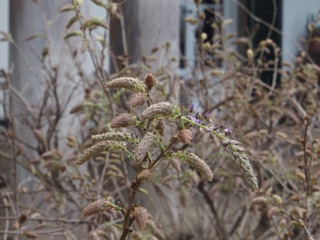
Rather than focus on important historical detail, (much better told by others!) I thought I’d lead you up the garden path, as I’m often inclined to do….to show you a handful of delights that intrigue me, at Camden Park….
Here, the famous wisteria that runs the length of the grand, colonnaded verandah was in fine bud last weekend, when I went for a potter with my camera, and promises to be a show of breathtaking beauty by this weekend….
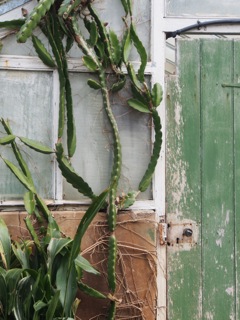
But come with me….down the back….beyond the grandeur…..to the old hothouse, where peeling paint of a delightful green and whitewashed windows frame a mad, clambering Epiphyllum…..
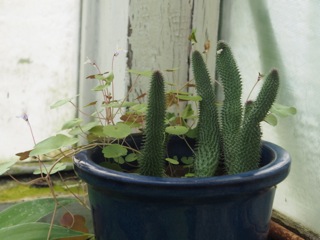
Where curious combinations of unusual plants lurk in corners….
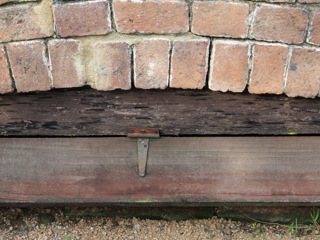
And the original mechanics of air flow and temperature regulation are clear for all to see…

Where glossy leaves sprout from mossed walls….

And ancient pipes link recently excavated boilers to the old hothouse foundations….

Ruinous walls of delightful patina shelter all manner of varied plant shape, form, colour and texture…
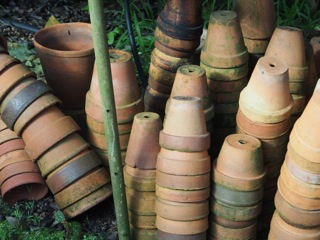
And of course, stacks of old terracotta pots never fail to capture my imagination…..

The original garden was laid out by William Macarthur, youngest son of John & Elizabeth Macarthur, a fine plantsman who (amongst other attributes), established one of the first nurseries in the Colony. While some trees and shrubs date back to this time, many plants have been introduced more recently, as a major reinvigoration of the garden is underway (with a focus on the reintroduction of some of the original species). See the Hortus Camdenensis.
Beyond the vistas of the pleasure garden, the working garden, the green & shade houses and all the delights they contain; and beyond the densely planted clivea walk, a newly opened area of espaliered fruit trees and experimental camellia propagation, may see you chance upon some spectacular exotics. For example the bud of this magnificent Butterfly amaryllis, Hippeastrum papilio, which should be in fine flower by the weekend.

Or this extraordinary Paint brush lily, Scadoxus puniceus, that I discovered the other day. It’s treasures like these that, from time to time, usually after an open day, and IF such a thing is for sale, I may bring home in a pot, to admire, to nurture, to add another layer of depth to the garden here; or add to the plant stand on our verandah….
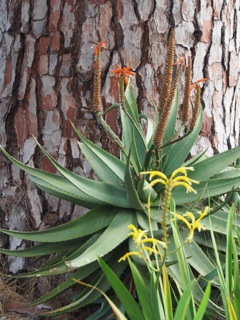
It’s a long time now, since I fell under the spell of the sheer romance of the history of gardens and of plant hunting….the very idea of plants plying the seas between the Americas and Africa, the Mediterranean, the East, the Tropics, China, Asia….from Australia to Kew Gardens and back. And, of course, Camden Park played a significant role in this thrilling world of sourcing and the trade of plants.
Although not on anywhere near the scale, I think in terms of visible original infrastructure, combined with exotic vegetation, that Camden Park is the best example we have of the workings of an estate garden, and the closest example of this to the fascinating Lost Gardens of Heligan.
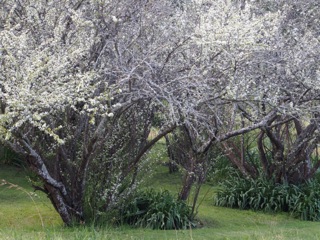
Exotics aside, you will also find a ‘pretty little wilderness’ at the bottom of the slope, inside the hedge that divides the garden from the harsh paddock beyond….
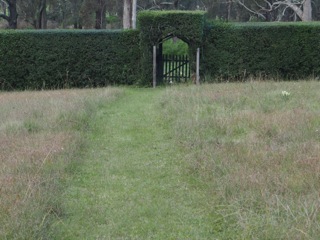
And perhaps, as fine an example of a perfect-picket-gate-in-a-clipped-hedge, that you are likely to find anywhere else on this earth! There’s so much I’ve left out – both information and image….but hopefully I’ve included enough to entice you to take a little journey to the outskirts of Sydney, to investigate this glimpse into history, and the inspiration it continues to promise for us today.
(And who knows, you may even discover a little treasure to take home yourself!).

